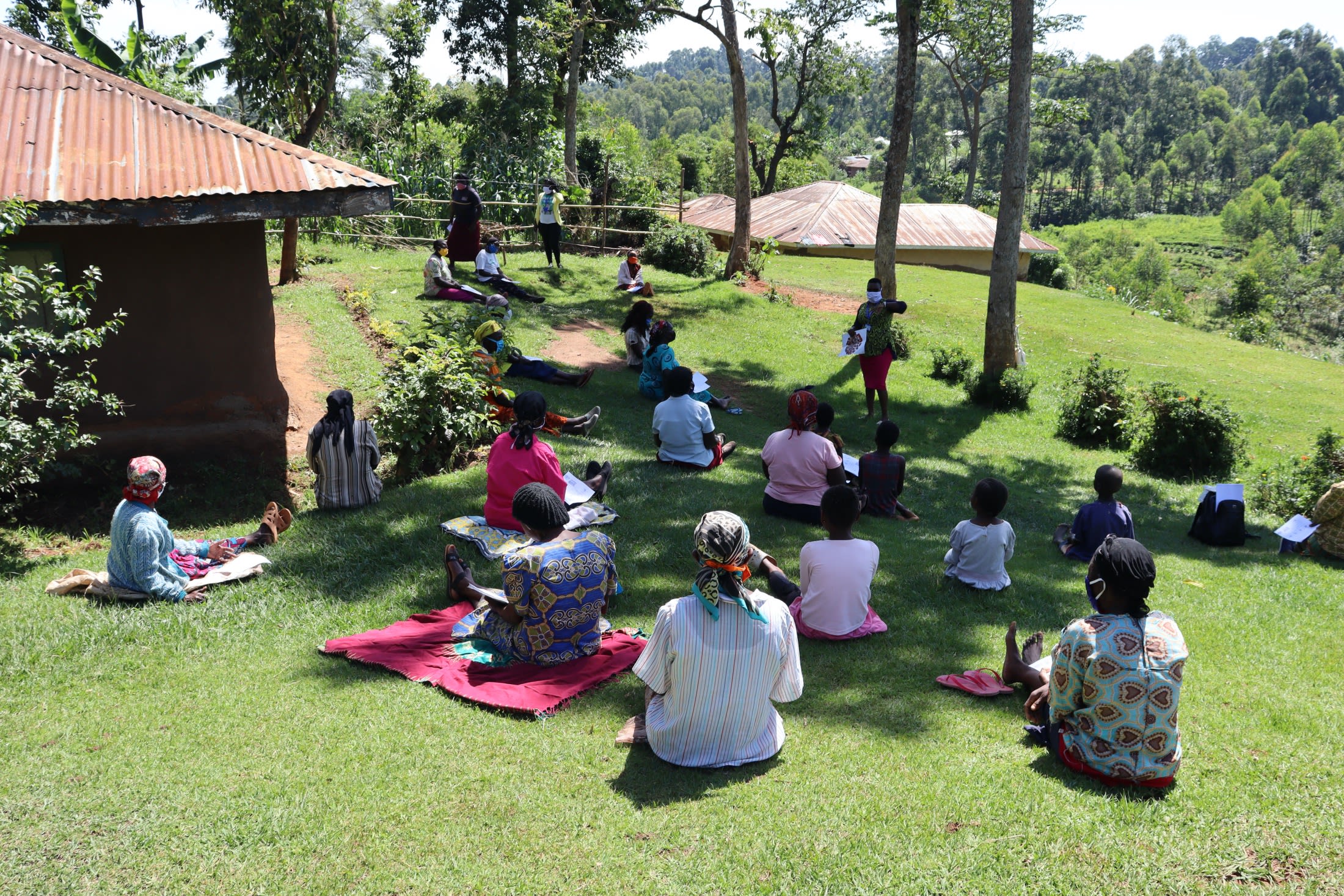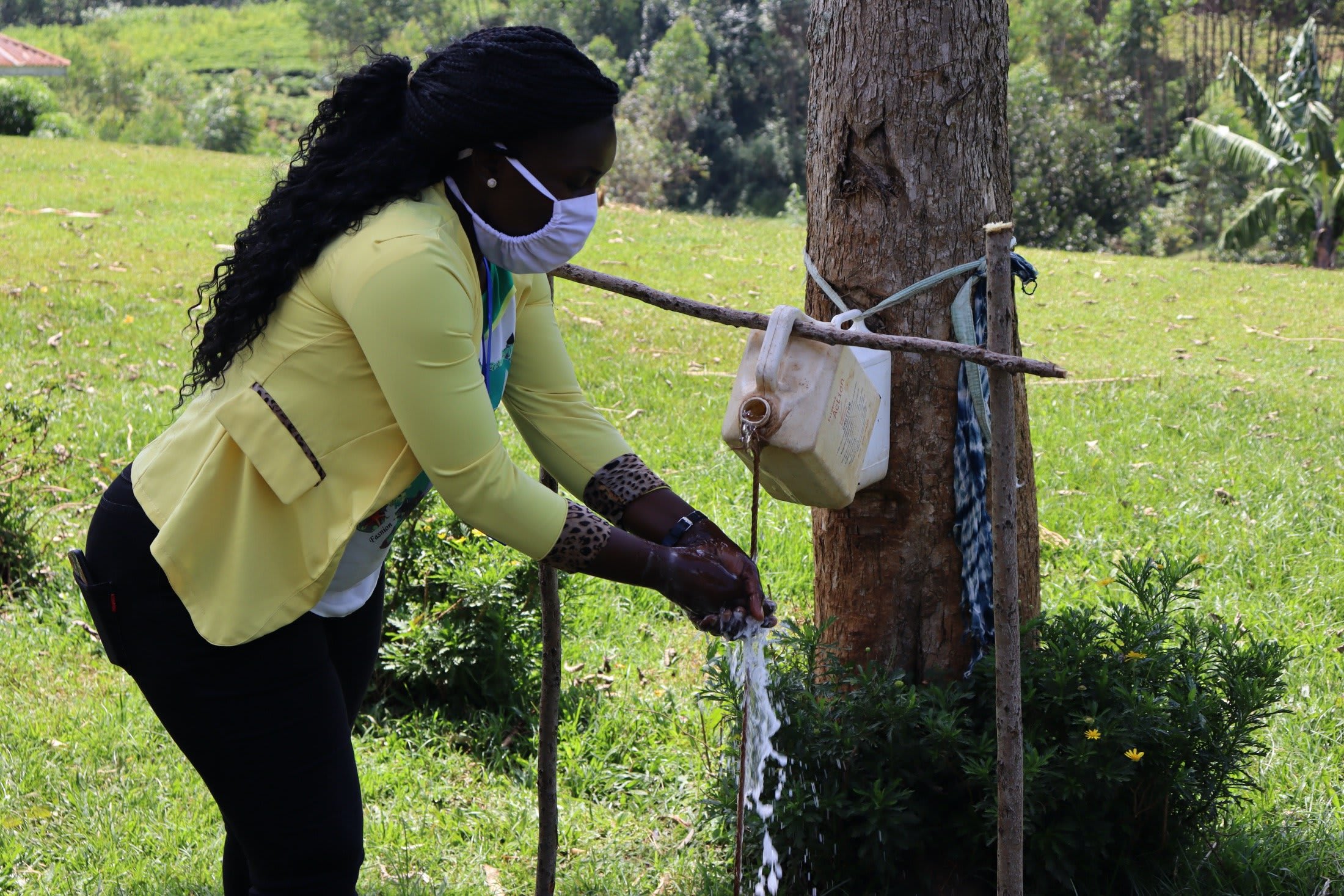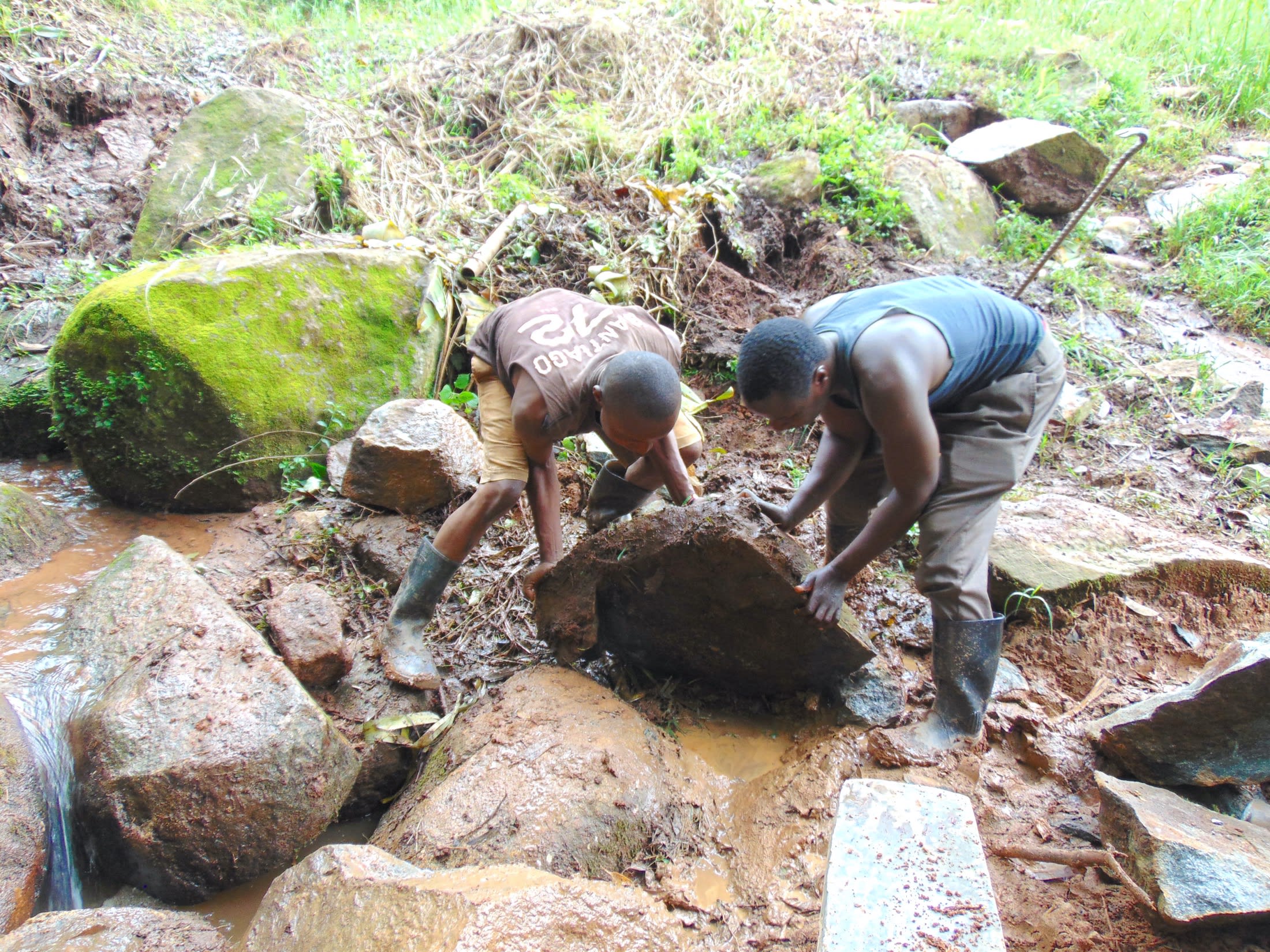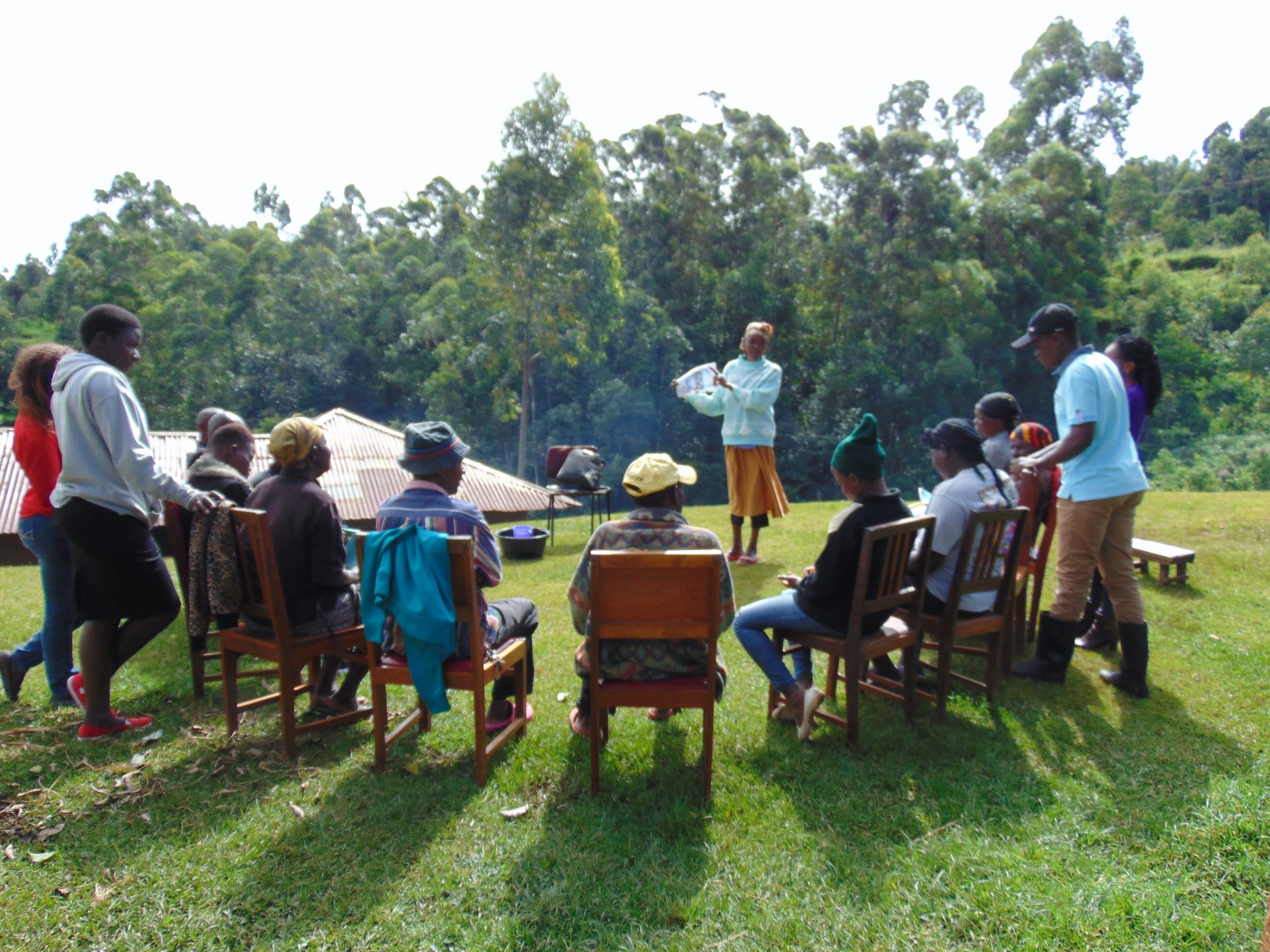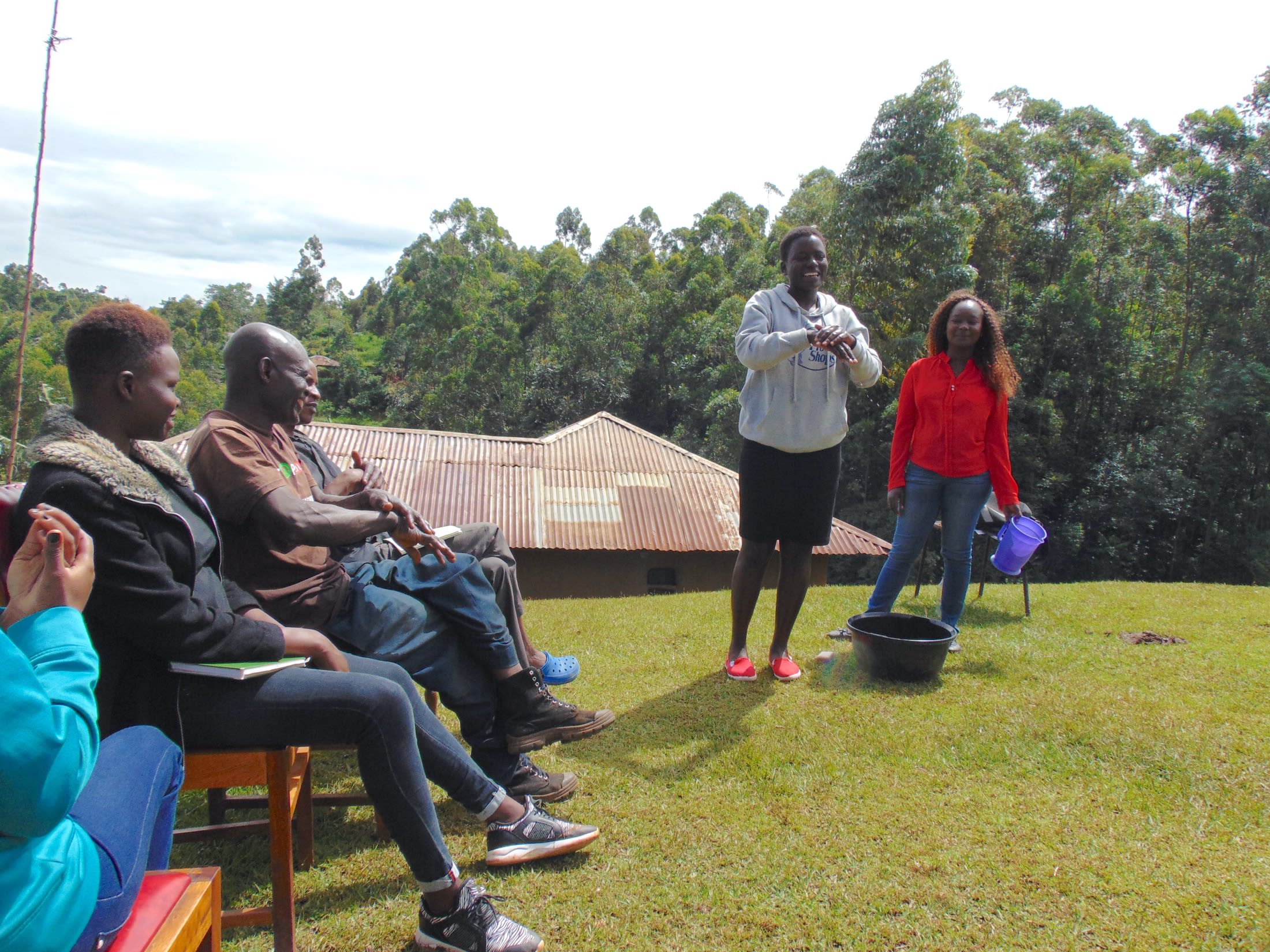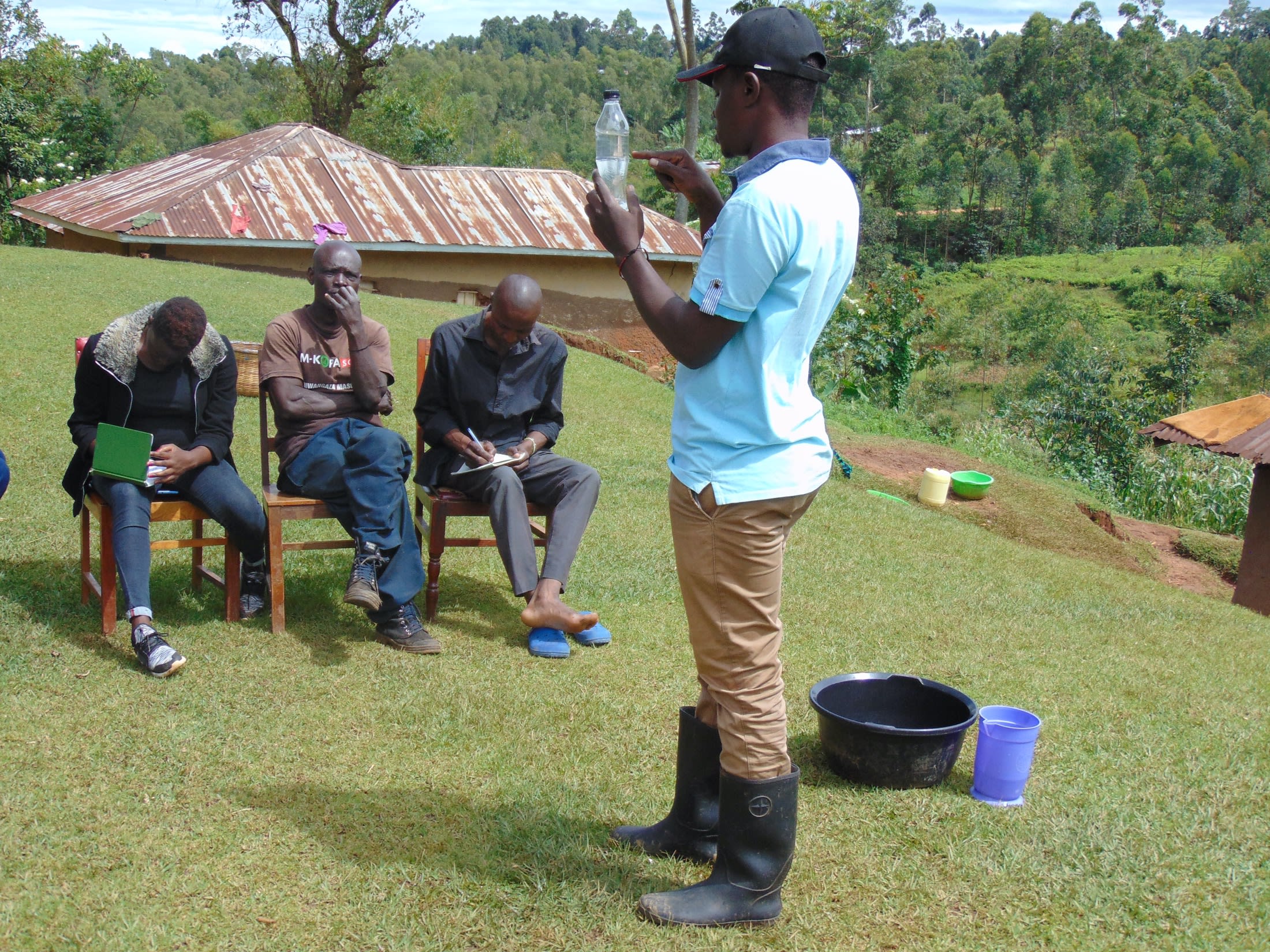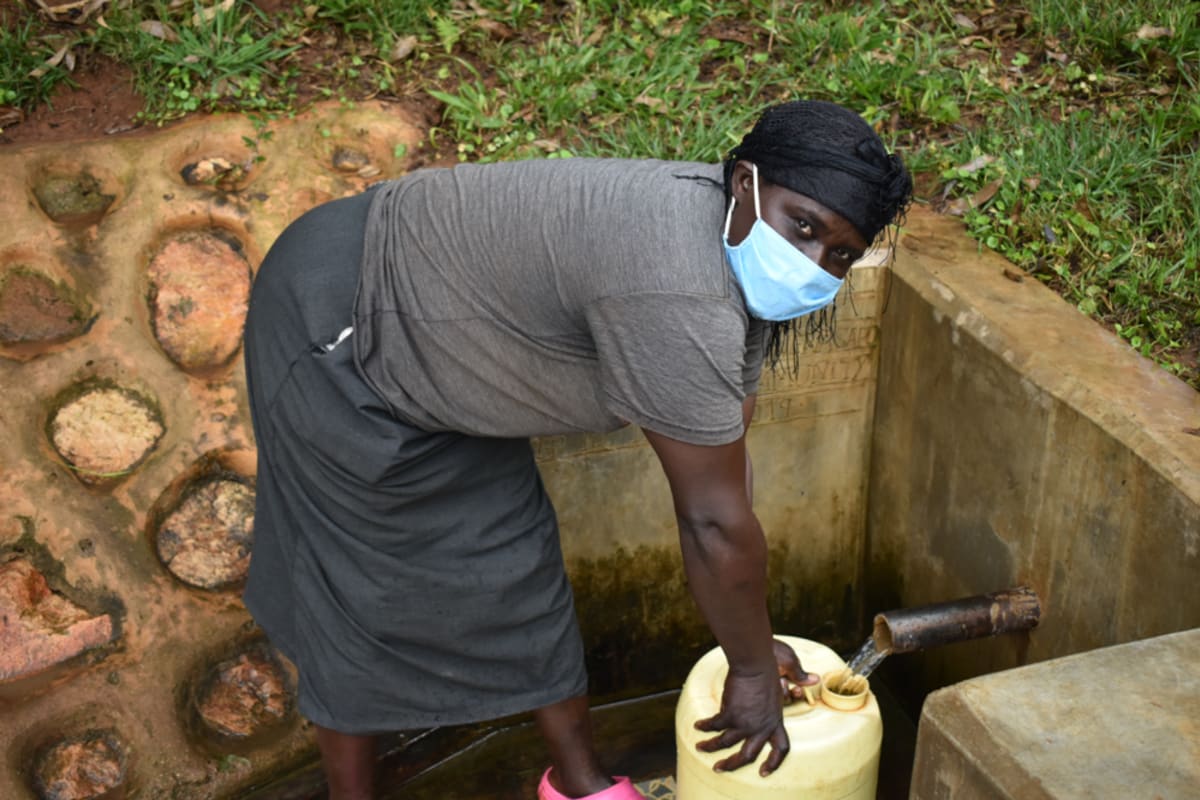Chepnonochi is a rural village with many people living in homes made of mud walls and iron roofs. Their kitchen walls are darkened by daily cooking smoke and are very small in size. This village is full of agricultural, with dwellers investing a lot of time and energy in planting food crops while some have also ventured into planting tree saplings to sell. The area is very quiet and noise is only heard when students of Gemeni Salvation Army Primary School are out for breaks playing in the fields. There are actually lots of schools in the area, so a few people work as support staff such as school cooks or guards.
An average day starts at 5 am and ends at 10 pm. Most people spend their days digging on their farms. Many women are also busy with household chores like fetching water and preparing food for children and spouses. Some have small businesses in which they sell green vegetables, tomatoes, onions, and various fruits to their customers, who are mostly civil servants employed in Shamakhokho or teachers.
However, the pursuit of water takes up valuable time each day. These 182 people have no water at home and must instead go out into the community to bring some back whenever they need to drink, cook, clean, bathe, and water animals or plants. They heavily rely on the water at Shikati Spring.
There is a plastic pipe where water is flowing to help the users fill their buckets. Water is tapped from this pipe directly into the containers. During this process, people must ensure that they balance on the stones laid at the entrance to the spring lest one slides back and plunges into the drainage channel. Though the pipe makes fetching water a little bit easier, it does not protect it from the contaminants that wash into the water. Animals come and go, while rainwater washes even more contaminants down the banks and into the water.
Community members have lost dear ones as a result of diseases believed to have been spread through unsafe water. Some get better through treatment, but so much time and money is wasted going to the clinic and staying at home to recover.
"Our community has suffered a lot due to taking water from this spring that is contaminated and is exposing us to water-related diseases. Come and help us protect it so that will not have to bury our dear ones as a result of those diseases," said Mrs. Kagai, a school cook who drinks water from Shikati Spring.
Scroll down to the last section of this report to learn about how we found Shikati Spring, along with a story about our community engagement.
What we can do:
Spring Protection
We will protect the spring to ensure that the water is safe, adequate, and secure. Construction will keep surface runoff and other contaminants out of the water. There will be stairs down to the collection point and a pipe that can easily fill water containers. With the community’s high involvement in the process, there should be a good sense of responsibility and ownership for the new clean water source.
Training
Community members will attend hygiene and sanitation training for at least two days. This training will ensure participants have the knowledge they need about healthy practices and their importance. The facilitator plans to use PHAST (Participatory Hygiene and Sanitation Transformation), CLTS (Community-Led Total Sanitation), ABCD (Asset-Based Community Development), group discussions, handouts, and demonstrations at the spring. One of the most important topics we plan to cover is the handling, storage, and treatment of water. Having a clean water source will be extremely helpful, but it is useless if water gets contaminated by the time it’s consumed.
Training will also result in the formation of a committee that will oversee operations and maintenance at the spring. They will enforce proper behavior around the spring and delegate tasks that will help preserve the site, such as building a fence and digging proper drainage. The fence will keep out destructive animals, and the drainage will keep the area’s mosquito population at a minimum.
Sanitation Platforms
"The state of sanitation and hygiene is very bad in our village. We need education to help the whole village, and that is the only way we will be safe from diseases caused by poor hygiene. I say the whole village because we have people that do not have latrines! They must be told to build latrines," said Mrs. Gavalwa.
"We can achieve a good health standard if we all cooperate; one person cannot do it alone."
On the final day of training, participants will select five families that should most benefit from new cement latrine floors.
Training will also inform the community and selected families on what they need to contribute to make this project a success. They must mobilize locally available materials, such as bricks, clean sand, hardcore, and ballast. The five families chosen for sanitation platforms must prepare by sinking a pit for the sanitation platforms to be placed over. All community members must work together to make sure that accommodations and food are always provided for the work teams.
How We Heard About Shikati Spring, and an Important Intervention
One sunny morning when we were seriously mobilizing materials for the project at Gemeni Salvation Army Primary School, a woman kept on following us and requesting ten minutes. We kept on asking her to wait as we were engaging with suppliers of sand and ballast to ensure they bring good quality materials, but the lady persisted until we gave her our attention. She explained how the headteacher at Gemeni had announced to the entire school how our organization that is constructing water tanks and latrines in schools also protects unprotected springs in villages.
She then explained that they have a spring protected by the community, but it is still exposed to contaminants as evidenced by the way people in Chepnonochi are still suffering from diarrheal diseases. We congratulated her community for protecting the spring, but went on to explain that we cannot destroy an already-protected spring to protect it anew, since there are so many springs that aren't protected at all.
The lady seemed to be disappointed but she never got tired of begging us to go and check her spring. Since she wouldn't leave, we decided to give the spring a visit: Not to protect it but to establish the routes of contamination in order to give her community a short training on how to make the water safer for consumption.
Reaching there we were shocked. How on earth could Mrs. Khagai call such a spring 'protected?' Community members had just bought a plastic pipe and put it inside the flowing water and lodged it there with stones. We had to explain that what they had done was not protection, and that we would request the organization to protect Shikati Spring.
The woman sighed in relief and went on to direct us to the landowner's home to talk more about the project. On our way to the landowner's home, a strange sight caught our attention. There was a pit with thin logs suspended over it. We stopped by the household and asked the man there what it was going to be used for. We learned it was going to be a pit latrine, but just needed to be filled in with mud. The logs were so weak and thin and would have been very dangerous to stand on. Even my weight was too much for such logs to bear, let alone a family of seven members stepping on it several times daily.
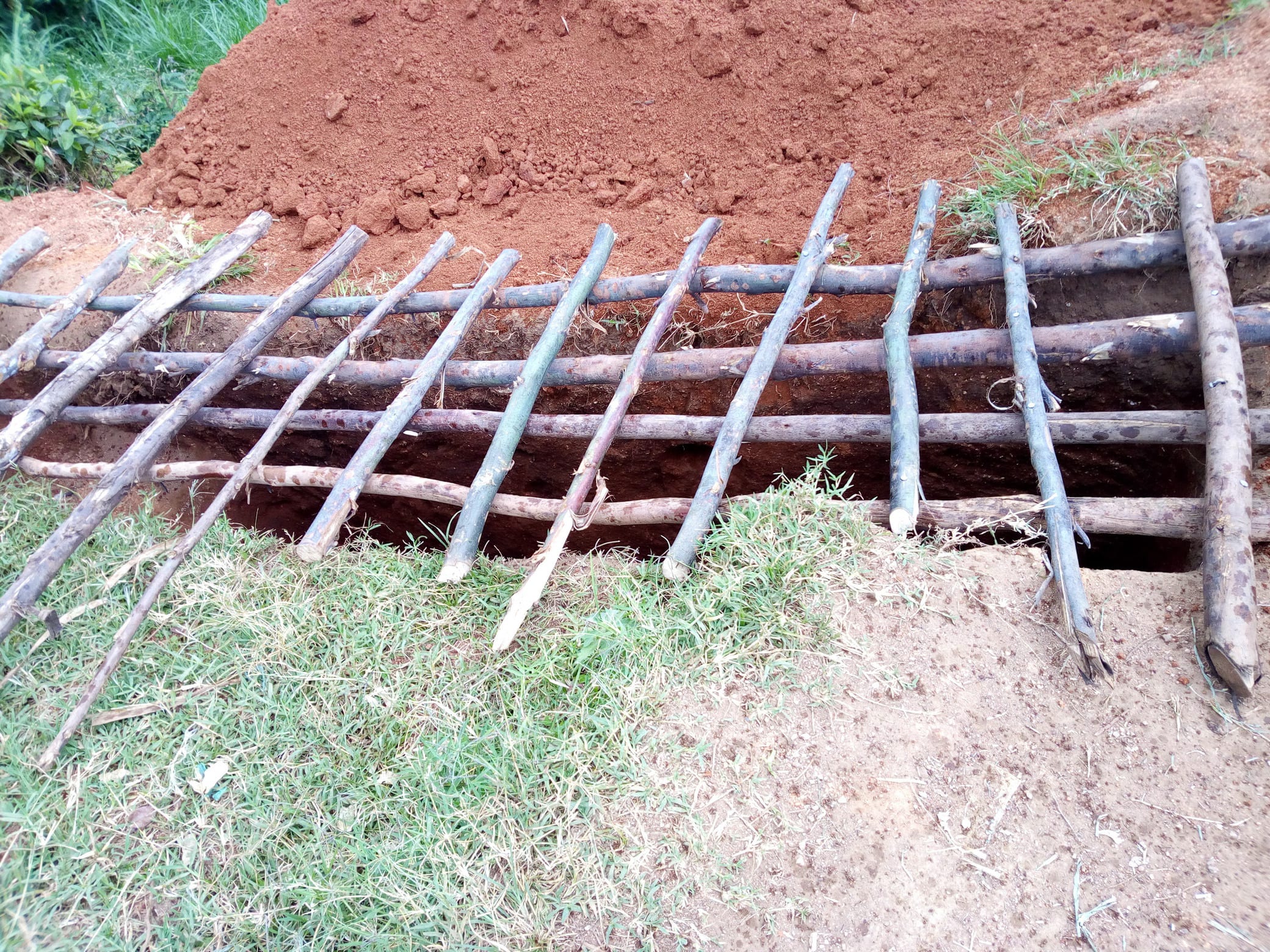
The man and his family were discouraged from constructing a latrine with such a weak floor, and 20 minutes were taken to convince him to get better latrine floor construction materials. He decided to do so but admitted he didn't have enough money for better materials. Nancy was still with us and told us she was aware of some strong metals from the area chief's old kitchen were being sold at a throw-away price.
We later learned that the man is offering unskilled labor support to build the area chief's new kitchen. We worked it out that the man will be given the strong metal as payment! The man is so happy and grateful that we passed by his compound on our way to the landowner's home.
We look forward to having more opportunities like this as we visit the community and hold hygiene and sanitation training.

 Protected Spring
Protected Spring
 Rehabilitation Project
Rehabilitation Project













